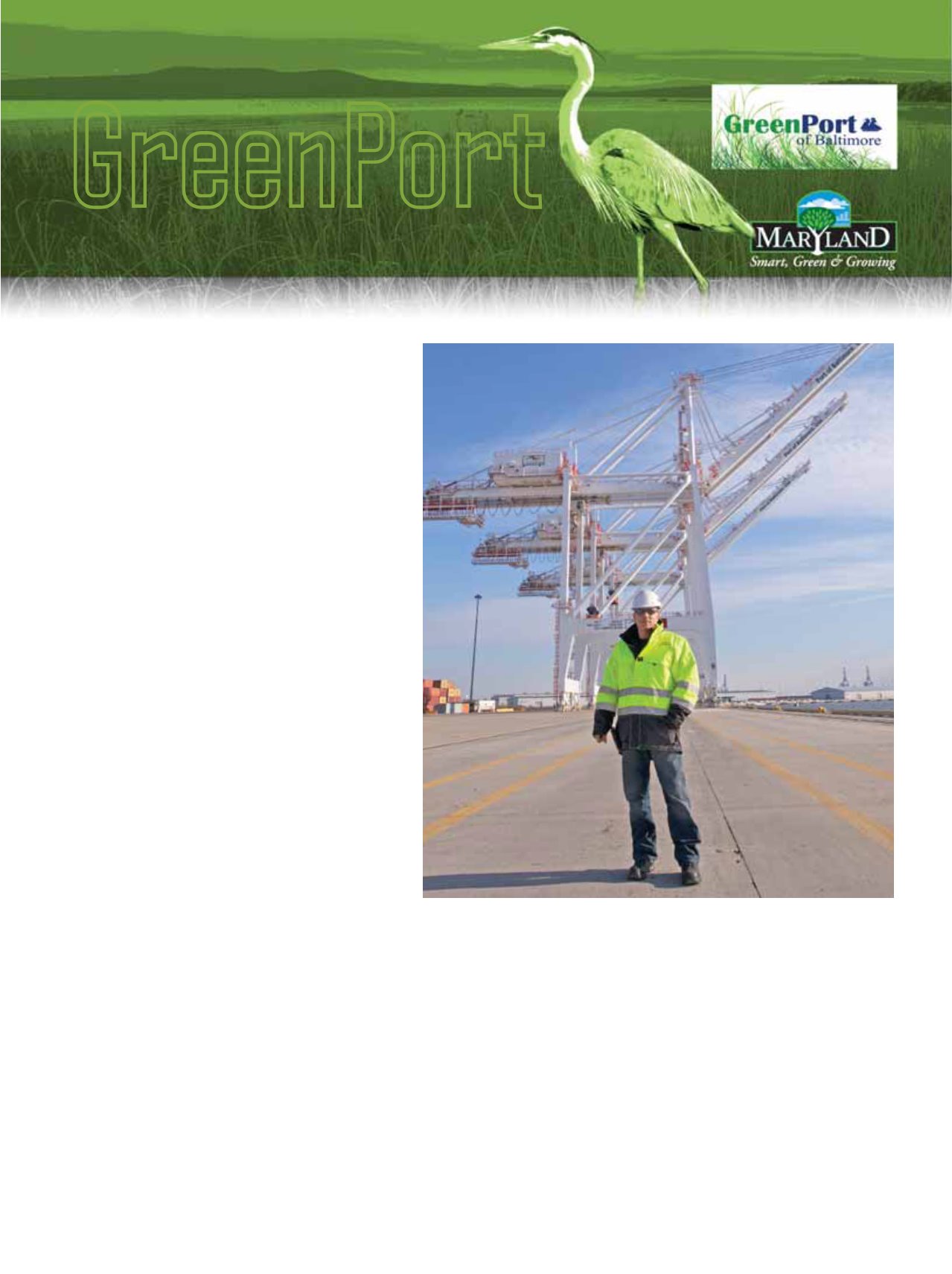
[
14
]
The Port of Baltimore
■
January/February 2014
Environmental Stewardship at the Port of Baltimore
>
>
>
Green
Port
BY NANCY MENEFEE JACKSON
Ports America
Chesapeake Crane &
Engineering Manager
Patrick Howell
has noted that the
electric-powered
Seagirt cranes reduce
the carbon footprint
while increasing
production.
KATHY BERGREN SMITH
Energy Saved
with
Seagirt’s Fast-working
Electric Cranes
F
our massive, electric-powered cranes now
operating at the Seagirt Marine Terminal
yield such increases in productivity that they
result in significant energy savings.
The cranes do not burn fuel; they use heavy-duty
electric cables to connect directly to the power grid,
running on 13,200 volts — significantly higher than
the older cranes. The higher the voltage, the less
demand on the power grid.
But the cranes’ real efficiencies lie in their ability
to unload ships faster, reducing the amount of time
that ships are idling at the berth, as well as reducing
fuel usage on equipment being used to unload the
vessels.
“When the crane is fully boomed up, it is just
over 400 feet tall or roughly the height of a 40-story
building,” said
Patrick Howell
, Crane & Engineering
Manager with Ports America Chesapeake.
With a working height of 110 feet, the older
cranes sometimes struggle to get across the boxes
stacked on the larger ships calling on Baltimore —
and this is before the gigantic post-Panamax ships
begin arriving in 2015. The new cranes add 30 feet
to the capable working height and can reach across
a ship where the containers are stacked 22 wide, as
opposed to 18 wide with the old cranes.
“We were limited with our outreach and our
working height on anything bigger than an 18-wide
ship,” Howell said, noting that the newer 14,000
TEU ships can have a draft of 50 feet and reach 22
containers wide. “They’re almost double the size of a
typical ship currently coming into Baltimore.”
Even more significantly, the new cranes can pick
up two containers at once. The older cranes could,
too, but only if the containers were not packed to
their maximum weight. A container can hold up
to 67,800 pounds, or roughly 34 short tons. Two
containers would weigh 68 tons, but the capacity of
the older cranes is only 50 tons.
“Capacity is a big deal, because the boxes are
coming in heavier and are regularly exceeding the
50-ton capacity we had with our older cranes,”
Howell said. “Now we can do two 34-short-ton
containers at once. In almost all scenarios, we’ll be
able to twin pick, which helps us to become more
efficient while using less energy. The new cranes
have given us the opportunity to help reduce our
carbon footprint in the Baltimore community while
also increasing our capabilities and production to
make the Port a more attractive option for current
and potential customers.”


